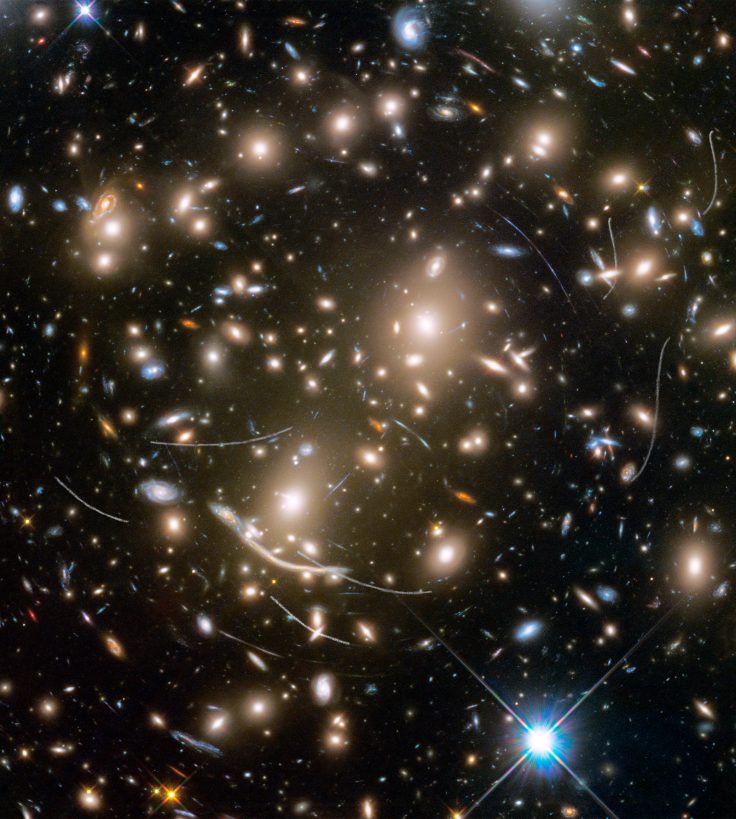Photobomb: Asteroids Got In The Way Of Hubble's Deep Space Pictures

While the Hubble telescope was just trying to do its job, several asteroids got in the way. The space telescope was taking photos of landscapes from deep space when asteroids that are about 160 million miles away from Earth hopped in the frame.

It’s unclear how far away the galaxies in the photo are, and not just because of the asteroids obstructing the view of them. Hubble was taking photos of somewhat random patches of the sky as part of a space survey called Frontier Fields, according to NASA, when it caught the photos. What researchers do know is that it’s likely that the red galaxies are furthest away and their light appears so red because it’s been stretched and reached the red part of the light spectrum until it reaches Hubble’s lens. The galaxies are represented by other colors in the photo as well, because the photos were taken in both visible and infrared light and then compiled together. The galaxies look almost like gems hanging in the sky.
The asteroids are easy to identify because they don’t quite look like the other objects in the photos, they look like “s” shaped lines without any color. While it appears that there are upwards of 20 or so asteroids there’s really only about seven in the photos. The reason for that being that the photos are made up of multiple exposures taken by Hubble and the same asteroid was caught more than once as it moved around in space. Of those seven that were captured, only two of them were identified before they were captured.
An asteroid is simply a rocky object flying through space, they tend to vary in size and orbit a sun. In our galaxy many of them happen to be in the asteroid belt between Mars and Jupiter. They’re the pieces that were left over after the solar system was formed.
The reason the trails from the asteroids appear to be curved in the photos is the parallax effect. The asteroids appear to be moving far more quickly than the objects further in the background of the photos because they are closer to the camera. That combined with the orbits of the asteroids and the Earth’s motion all adds up to make the trails appear curved.
As part of the Frontier Fields project Hubble photographed six “parallel fields” while also photographing galaxy clusters, according to NASA. The photo above is a combination of visible and infrared light of the parallel field for a galaxy cluster called “Abell 370.”
© Copyright IBTimes 2024. All rights reserved.











